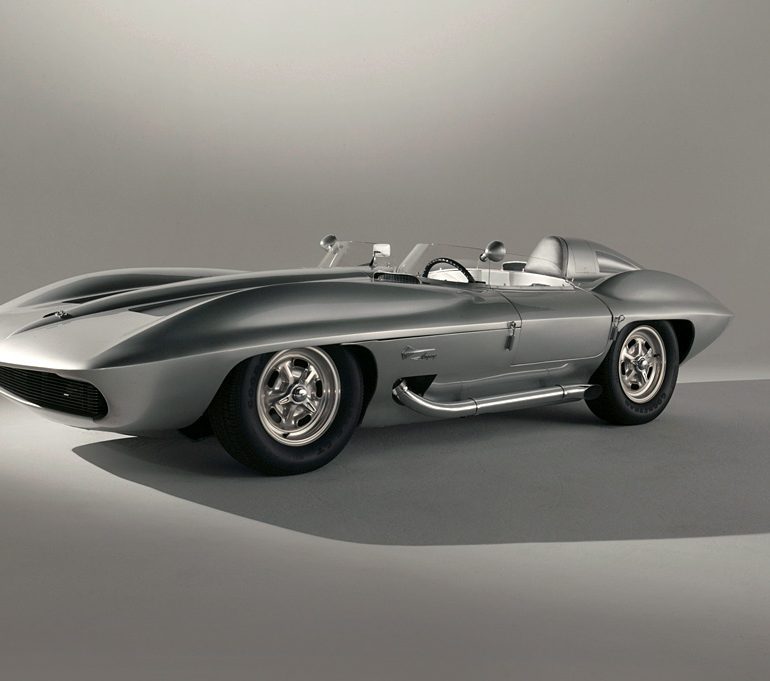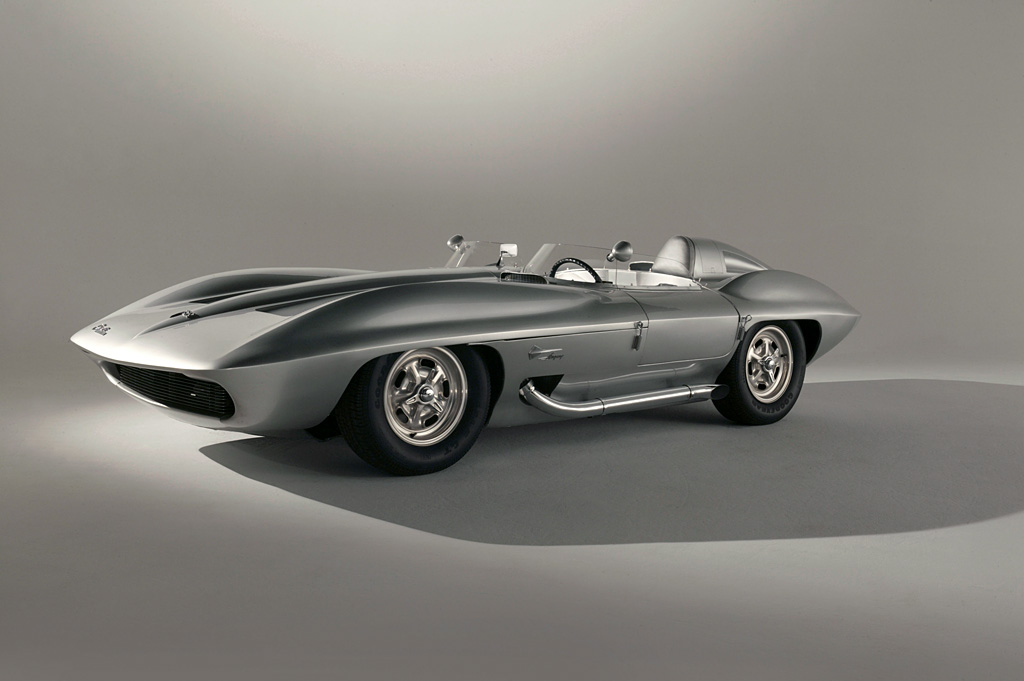1959 Chevrolet Corvette Sting Ray
In 1959 chief stylist Bill Mitchell made his own version of the Corvette using his own funds and it was separate from his work at GM. The result was a stylish roadster that went on to define what the Corvette C2 would be from 1963 through 1967.
The first Sting Ray was actually built on a stylish prototype Corvette known as the SS which was built for the 1957-running of the Sebring 12 Hours. This featured a potent custom chassis from which Bill Mitchell could build from. With the AMA ban on manufacturer racing, Bill Mitchell took up the project personally.
The first appearance of the car was at Road America in June of 1959 but the car retired with brake failure. John Fitch who helped develop the original SS was behind the wheel. Later in the season the car was raced by Dick Thompson who eventually won the C Modified National Championship. He said “That car was a 2000-pound car with a stock Corvette engine in it and, of course, it had the usual terrible Corvette type brakes on it. Those brakes were nothing more then sedan brakes with fancy linings and they didn’t work.” Zora said he didn’t use disc brakes because none were manufactured in America.1
Heritage Center Description
Bill Mitchell, GM’s famed design director and hand-picked successor to the legendary Harley Earl, was a firm believer in the influence that racing brought to improving production cars. Unfortunately, the American Manufacturer’s Association banned factory-backed motorsports efforts in 1957.
Undeterred, Mitchell received permission to race privately and bought an experimental Corvette racing chassis from Chevrolet – with the stipulation he alter the bodywork so there was no mistaking it for the earlier factory-fielded Corvette racers. Mitchell and his protégé, Larry Shinoda, got to work and developed the Sting Ray’s design. It was influenced by Mitchell’s experience while snorkeling.
As it was based on a racing chassis, the Sting Ray was small and light, with a 92-inch wheelbase and a curb weight that was almost 1,000 pounds less than a 1959 Corvette. It was originally powered by a fuel-injected 283-cubic-inch V-8 that developed about 315 horsepower, which helped deliver a strong fourth-place finish on its inaugural outing at Maryland’s Marlboro Raceway, in April 1959. It was driven by Dr. Dick “The Flying Dentist” Thompson. The car went on to win an SCCA National Championship in 1960.
The Sting Ray was retired from racing after that championship season and was reborn as a concept vehicle, after a passenger seat and other passenger-car features were added. Mitchell even used it as personal transportation, giving it the rare distinction of being a race car, concept vehicle and road-ready street car. It can even be seen in the 1967 Elvis Presley movie “Clambake.”
Undoubtedly the greatest legacy of the Sting Ray was its influence on the Mitchell-style 1963 Corvette’s lauded design. It translated the Sting Ray’s blistered fenders and long nose/short deck proportions, but in a sleeker representation, thanks to the Corvette’s longer wheelbase and overall length. The redesigned Corvette even wore Sting Ray badges.
The Sting Ray is one of the jewels of GM’s historical vehicle collection and has been restored with a fuel-injected 283 engine, just like the original that powered the car more than 50 years ago.
Sources & Further Reading
Sources & Further Reading
1.Friedman Dave. Corvette Racing Thunder. Gullstrand Motor Productions: 2003.
1959 Chevrolet Corvette Sting Ray Gallery
See all 1959 Chevrolet Corvette Sting Ray Pictures here
In Detail
| type | Concept / Prototype Car |
| built at | USA |





